Invasive species: they’re everywhere. And you could be inadvertently spreading them while you’re outside having fun, working around the yard, or even doing your holiday shopping.
While attending the recent Upper Midwest Invasive Species Conference, I was struck at some of the strange ways invasive species get spread. Oftentimes, we have only our bad choices to blame – introducing new infestations and causing damage to native ecosystems, agriculture and human health in the process.
Some reasons invasive species spread are hopefully relegated to the past. But others are still spreading due to our decisions. Making slight alterations in behavior, you can make a huge difference for conservation.
Here are 10 of the unusual ways invasives can be spread. There are many more – leave your own additions in the comments.
-
Running Shoes
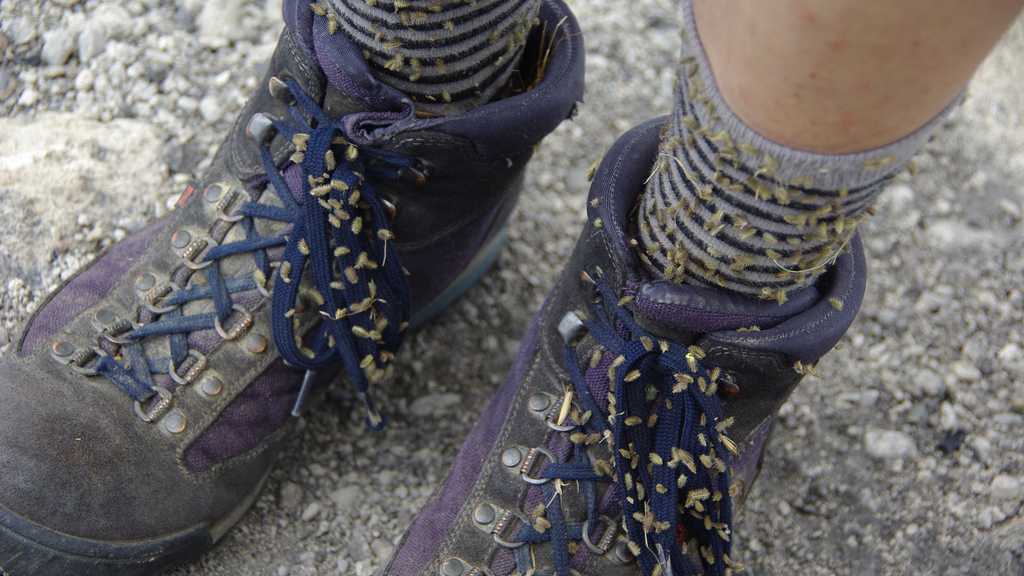
Shoes covered in weed seeds. Photo © Martin Lopatka / Flickr through a Creative Commons license You’re out running the hills after a hard day’s work, enjoying the fresh air and beautiful scenery. You’re in a zone, so you don’t notice when your shoe brushes against a patch of weeds. The next day, you fly to a meeting, running shoes in your luggage.
The next day you go for a run several states away, and dropping weed seeds along the way. The weeds have just spread far faster than your running pace.
Running shoes aren’t the only culprit. Fungal spores transported by caving equipment led to the spread of the deadly white-nose syndrome in bats. Bikes, ATV’s, boats, fishing equipment, clothing and other outdoor gear all are prime ways to transport weed seeds – infesting the places you love to recreate.
What You Can Do: Clean your outdoor gear after each outing, especially if you are moving it to a new area. The Play-Clean-Go campaign offers excellent tips to “stop invasives in your tracks.”
-
Aquariums and Backyard Ponds
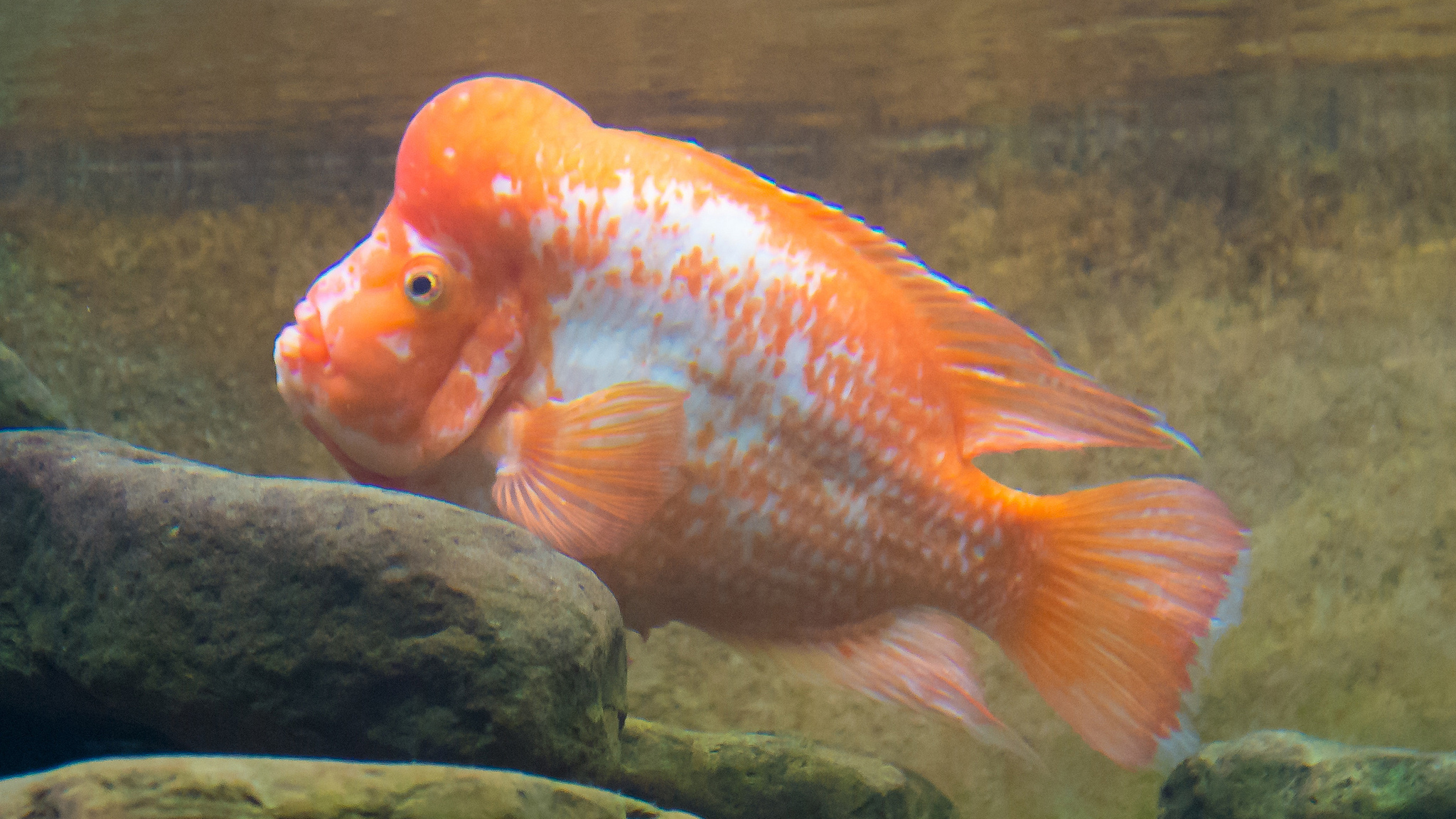
Amphilophus citrinellus (Midas cichlid). Photo © mark6mauno / Flickr through a Creative Commons license Your aquarium might seem like a contained system. But a long list of aquatic invaders originated from pets and plants kept in personal aquaria or backyard ponds.
Some people tire of tropical fish and think the best thing to do is set their pets free. This has led to non-native fish invasions in many places (the waters of Everglades National Park, for instance, are filled with exotic cichlids, walking catfish and others). Backyard ponds can flood into nearby streams or rivers, taking invasives with them. And when aquarium plants are cleaned up, the disposed plant material can contain seeds that spread.
What You Can Do: Don’t set pets (of any kind) free, ever. At best, it’s inhumane, and at worst you’ve introduced an invasive species. Dispose of aquatic plants in plastic bags. The Reduce Invasive Plant and Pet Escapes (RIPPLE) campaign offers many resources to responsibly take of care of your aquarium’s residents, without causing the next aquatic nuisance.
-
Firewood

Heating your home or cabin with wood when properly sourced (locally harvested or heat treated!) is an inexpensive and efficient way to get through the cold months. Infographic © Don’t Move Firewood This one may not be surprising due to the wildly successful Don’t Move Firewood campaign. But it bears repeating. Oftentimes, dead or dying trees are cut to sell for home firewood use or camping. These trees may be dying due to forest pests.
When you move firewood long distances, you can be transporting a host of nasties, including the emerald ash borer and Asian longhorned beetle. These pests exact a heavy toll on our forests. Don’t help move them into new areas.
What You Can Do: Buy it where you burn it. Support local firewood providers and don’t move wood around. The Don’t Move Firewood campaign can help – and they have really great graphics and videos to help spread the word on social media.
-
Artificial Christmas Trees

Artificial trees on display at Bronners Christmas Wonderland, Frankenmuth, Michigan. Photo © Ken Lund / Flickr through a Creative Commons license Cutting a live holiday tree and moving around could pose the same threats to forests as firewood. But artificial trees actually can hold their own pests.
Many artificial trees have wooden bases, and they’re often manufactured in China. Some surprised customers have opened their tree box and found beetles or grubs. These turned out to be brown fir longhorn beetles, a species with the potential to wreak havoc on native trees. Since 1999, 20 brown fir longhorn beetles have been reported in artificial trees. When this happens, all the trees in that shipment have to be tracked down and incinerated.
What You Can Do: In a global society, species move around. Having better invasive species protocol for imported goods is vital. But you can play a role: if you see an unusual creature in something you’ve bought, report it.
-
Leaf Piles

Fall leaves. Photo © Kenny Louie / Flickr through a Creative Commons license Many of us are raking our backyards right now, piling up leaves to be carried away or composted. Those leaf piles are fun to jump into, but they may also be harboring a nasty invasive worm.
Asian jumping worms churn through leaf litter in northern forests, altering biodiversity and soil chemistry. These worms live along the surface, in leaf litter, and lay their eggs there. Their cocoons are difficult to notice so they may end up in a leaf pile. When those leaf piles are bagged and transported away, the worm spreads.
What You Can Do: Adult Asian jumping worms are quite distinctive (see my previous blog for photos and video). The cocoons, though, are so tiny that they’re impossible to find. However, if you buy compost, make sure it has been heat treated to kill any pests.
-
Fishing Bait
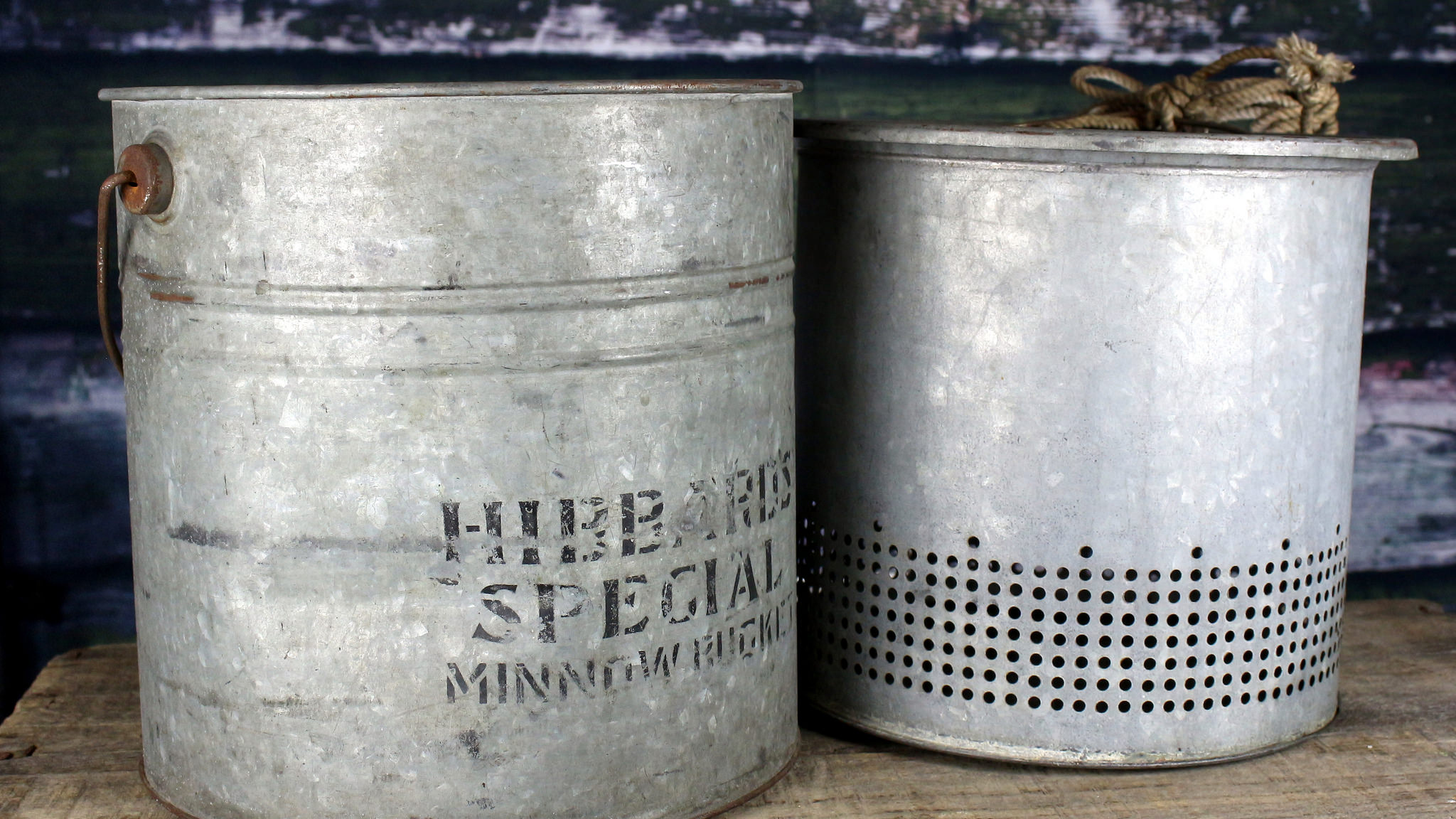
Vintage bait buckets. Photo © Cindy Shebley / Flickr through a Creative Commons license A fishing pole, a bobber and a worm: the archetypal image of a lazy summer day. But those worms are often non-native species. And it’s not just worms: many minnows and crayfish used for bait can also become invasive.
At the end of a fishing session, some anglers dump their bait into the water. Such an action could change their favorite fishing hole forever.
What You Can Do: Some states regulate the use of bait to native species, a wise policy. But whatever your state regulations, don’t dump your bait after you’re done fishing. Dispose of it away from water.
-
Truckloads of Pigs
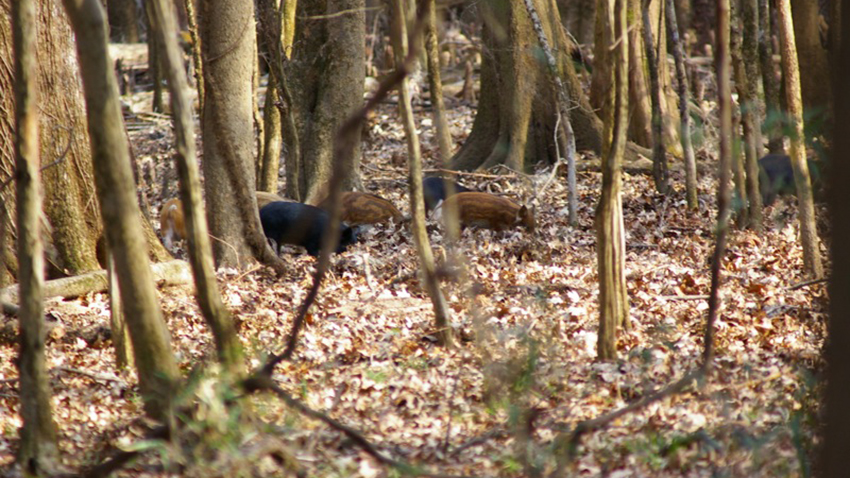
Feral pigs in Congaree National Park. Photo © Duane Burdick / Flickr through a Creative Commons license Feral hogs have made a dramatic spread over the past 25 years. Yes, they are tenacious and adaptable, but they haven’t spread into the Midwest, the Great Plains and parts of the Rockies on their own. They’ve had help – often from hunters who believe having pigs around would be a nice addition to the game list.
Numerous pig infestations have occurred when a local hunter and fenced hunt operator imports a truckload of feral pigs from another state. Hogs root up ground-nesting birds, native plants, mushrooms, reptiles and farms. Once established, they’re tough to stop.
What You Can Do: I suspect if you are loading up a truck with feral hogs, you’re not reading this blog. But all of us can report hog sightings. And hunters can clean up our act. Hunting shows and outdoor magazines often trumpet that hunters are the best line of defense against feral hogs. The truth is, hunters are the ones spreading them around. I’m a hunter. I’ve hunted hogs. But let’s be clear: hunters are causing this problem and it’s up to us to fix it.
-
Over-Abundant White-tailed Deer
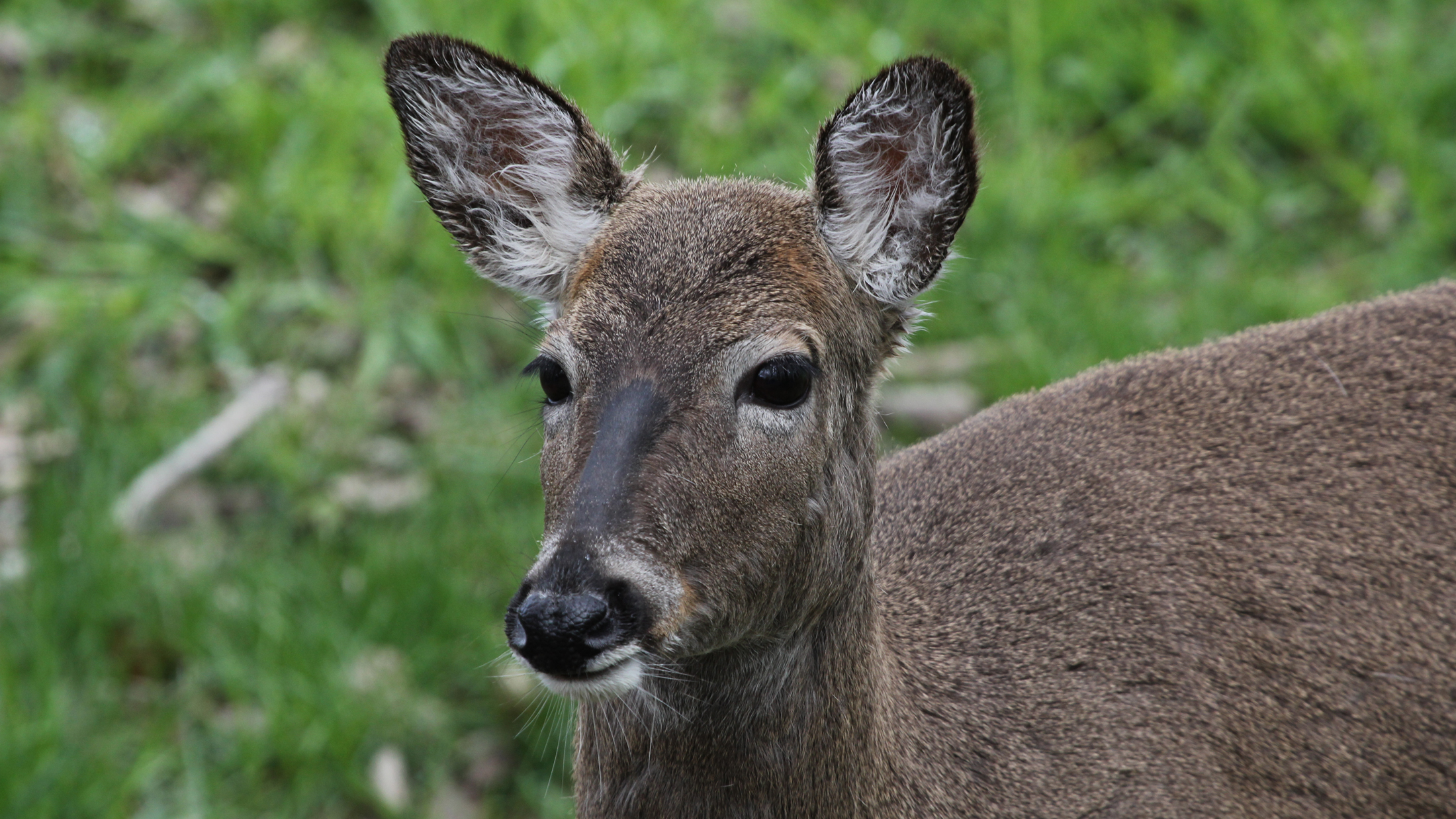
The recovery of white-tailed deer populations is a stunning conservation success. But is it too successful? Photo © The Nature Conservancy (Matt Miller) Many ecologists consider white-tailed deer to be a bigger threat to the eastern forest than climate change. Deer clear the forest of undergrowth, leaving a lot of disturbed soil. Invasive plants thrive in disturbed soil.
White-tailed deer also don’t eat invasives, so it creates a cycle: the deer eat natives, creating space for non-native plants. The deer then focuses on the remaining native species, creating even more room for invasives.
What You Can Do: Unlike others on the list, this one may not seem like a direct human impact. But the over-abundant whitetail population is a direct result of human intervention. Hunters want more deer. Animal rightists don’t want to kill deer. This overprotection of the deer herd has many consequences, of which invasive plants are just one. All of us have a responsibility to advocate for community-based deer management and lower herd numbers.
-
Tourist Attractions

A sika deer at Chincoteague National Wildlife Refuge / Assateague Island National Seashore. Photo © Emma Kerr/USFWS In the early 1900s, a Maryland Boy Scout troop came up with a novel fundraising idea: They’d feature an exotic animal as a boardwalk attraction at nearby Ocean City. They chose sika deer, an Asian species that resembles a miniature elk.
They earned enough money to take a trip, but soon they found the novelty faded, and feeding expenses exceeded revenue. The troop took the sika deer to Assateague Island and released them. The animals still roam that island and surrounding areas.
What You Can Do: Presumably, you aren’t going to use exotic deer for your youth group fundraiser. But no matter what the circumstance – including unwanted pets – do not release animals into the wild. It probably won’t live a happy and free life as you imagine. And if it does, the results for society could be worse.
-
Shakespeare
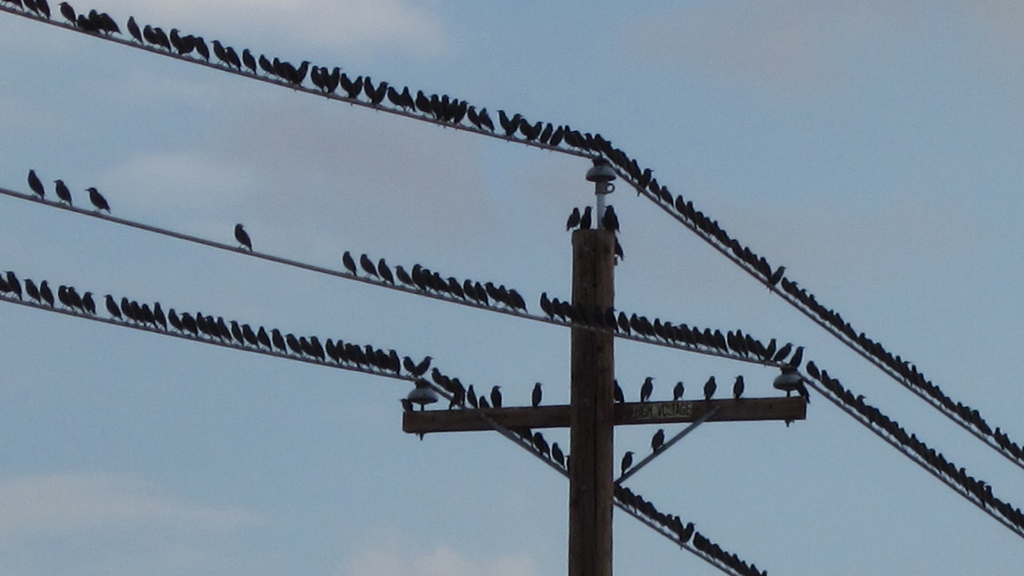
A multitude of European starlings in California. Photo © David Prasad / Flickr through a Creative Commons license It’s one of the most notorious of all invasive introductions. In the late 1800s, a group called the American Acclimatization Society undertook an ambitious if idiotic project: to introduce every bird mentioned in Shakespeare. All 600 of them.
Enterprising member Eugene Schieffelin chose the European starling as his personal project. True, the starling appears only once in Shakespeare, and not in one of his more famous works (Henry IV, Part 1). Nonetheless, Schieffelin was wildly successful in his introduction. So successful that starlings now swarm the North American continent.
What You Can Do: I’d like to think that species introductions like this are in the past. But it is dismaying just how many invasive introductions began with someone wondering, “Wouldn’t it be cool if we had [insert favorite species] here?” The correct answer: “No, it would not be cool at all, and future generations will hate you for it.” In our world of easy transport and global trade, invaders move around easily enough. Don’t add to it by intentional introductions.



